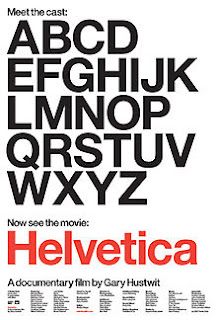I decided to watch Helvetica as Helvetica itself is a font closely associated with modernism, especially throughout the Swiss style design which was prevalent from the 50s onwards. The film goes over the topic of modernism and post-modernism throughout it's film and will be useful to pick up a few points about what makes modernist graphic design just that, especially in Europe. Knowing about and studying individual traits will make it easier for me to discuss them and put them into application for the publication.
In particular what designers such as Wim Crouwel and Massimo Vignelli think design should be, designers which are modernist designers. Also Wim Crouwel discusses his grid, I can't wait to to create a similar grid and apply information from Japanese design onto it.
I already feel relatively comfortable with the Japanese style and design culture as I looked into this pretty deeply for the essay, more research will still take place in synthesis with a design practice.
---------------------------------------------------------------------------------
* = important point towards publication
"It's like air, it's like gravity"
"It's ubiquitous. Let's eat crap because it's on the corner." - Spiekerman
* designer has an enormous social responsibility
VIGNELLI
Fight against the ugliness. Visual disease. We try to cure it.
The distance between letters. *Typography is really white. Space between letters.
It's like music, the space between the notes makes the music.
AmericanAirlines
*I use no more than 3 typefaces
*Type shouldn't be expressive. "Dog" doesn't have to look like a dog
Had to be MODERN
* 1950's. Development of Graphic Design. Post-war period. Idealism. European designers in particular felt Graphic Design is a part of rebuilding and reconstructing society. Similar to the Constructivists and El Lissitsky. Period of early experiments.
*Social Responsibility
Karl Gernster
Emergence of Swiss Style of design
Helvetica emerges in 1957.
WIM CROUWEL
"I love modernism."
*"I don't like using different typefaces"
It should be clear, readable and understandable.
Invented a grid. "Within the grid, I play in it." -
I need to use this for atleast one of the applications of Euro design to Japanese design
* "A tool of creating order."
Computers speed up work. The design isn't better, but quicker.
*In 1960's most design was in 2-3 layers. Unlike today
Sketches widely, close to finished. Typefaces are very important, almost the biggest decision about the design.
'Neutral' typefaces. Which don't scream attention but effortlessly do the job
"Neutralism was a word we loved."
Harry Carter - Typographer
* Most type designers would start with a lowercase h. Tells you width, curvature, height, ascender height, nature of serif or sans-serif. Then an o as this is rounded to contrast against straight sided h. Then a lowercase p as it's a mixture of straight and round. From here so much DNA. b, d, q and many other type forms can be made.
HELVETICA
Horizontal terminals
"Die Neue Haas Grotesk" original name
Max Miedlinger. Typographer who designed Helvetica in 1957
Haas Type Foundry - Helvetica was born here.
Edward Hofmann
The letters. Counters. Letters fit snugly and pefectly in the surrounding space. Negative space is clearly very important, more so than the letterforms maybe.
Means "The Swiss Typeface" in Swiss.
The feeling of turning script and over cluttered 50's ad design to Helvetica felt like an "Icy glass of cold water". Changed ad design in the 1950's.
Periods and full stops, bold, short taglines replaced paintings, portraits and exclamation marks.
From...

To...

Neutral and reliable. IRS tax forms in Helvetica. People want it to look efficient, but also human with curves.
Typeface invites open interpretation
"Gotham Typeface" uses for Tribeca Film Festival
ERIK SPIEKERMAN
*A real typeface comes from handwriting. There's a rhythm to it.
Helvetica has no rhythm.
Swiss ideology = Make every letter look the same. That's an army not people
NEVILLE BRODY
Fitting in, doing the job instead of standing out.
* Safety. Peace of mind. Social responsibility.
The typeface of socialism, maybe more so than capitalism?
Post-modernism.
A reaction to conformity. The dull blanket of sameness. A need for change. Vietnam war - Helvetica?
Wanted to get away from the horrible slickness of itself. Produce something with vitality and character.
SAGMEISTER
I was always very bored looking at type.
Started to do our own type, Hand lettering. Lou Reed poster.
DAVID CARSON
"I never learnt what I wasn't supposed to do. So I just did what I felt like."
* Just because something's legible doesn't mean it's communicating the right thing.
Modernism used a lot of cut outs and bold imagery, when used against contrasting colours and bold large type, efficient and clever use of space.
Logical. Unfussy. Stripped down.
EXPERIMENTAL JETSET
* We don't like humanistic typefaces. They have too much expression.
* One pt size if possible
* "Helvetica bold in one size for a flyer. It looks good."
More good young type designers than at any point in history. Late 20's early 30's.
Colour palettes of clues, reds, whites and blacks. Heavy use of negative space and grid, obviously.
Moving forward
I'm actually quite fascinated by the Swiss form of modernist graphic design and work by designers such as Wim Crouwel, Muller-Brockmann and Vignelli I'm definitely going to look deeper into this for personal development and project development. I want to know how these designers thought so I can almost think like them and design.
Crouwel's grid is also incredibly important. I can't wait to strip down information from Japanese design and apply it to the grids.










0 comments:
Post a Comment